Searching for the best travel camera you can buy? We've rounded up all of the best options in this regularly updated guide. So whether you're staying local, planning an all-action trip to the great outdoors and aiming for a well-earned city break, you'll find the ideal option for you in our ranked list below.
There are a few key things to bear mind when deciding on a travel camera. The most important one is most likely size. While pocketable compacts offer maximum convenience, your image quality will get a boost from the bigger sensors and interchangeable lenses of larger models. Deciding whether you want convenience or flexibility is the first step.
If your adventure is likely to involve lots of bumps, water and inclement weather, then you're also best off looking either at rugged compacts, like the Olympus TG-6 below, or an action camera like the GoPro Hero 9 Black, if video is your main priority.
Beyond size, subject matter should be your next consideration. For example, a long zoom comes in handy on safari, while something small, light and fast (ideally with prime lenses) is better for snapping quick photo opportunities in the city. The best travel cameras offer a versatile blend of performance and portability, allowing you to shoot in a range of scenarios and conditions.
Want to record video for friends, family or fans back home? If travel vlogging is on the agenda, several of the cameras below offer fantastic video skills. The Sony ZV-1, for example, can shoot outstanding 4K footage, backed up by handy features such as a hot shoe and 3.5mm mic port. Not planning to record video? You can save money by going for an older model which is less video-focused, such as the Panasonic ZS200 / TZ200.
In fact, the Panasonic Lumix TZ00 is our pick for the title of best travel camera you can buy right now. It ticks all the boxes that a good travel camera should: it’s compact and discreet, yet also features a large sensor with flexible zoom, plus manual control options and a host of other useful features. Although it’s not the newest travel camera you can buy, it’s still top of the list – especially at its price point.
Talking of which, if you can hold off your purchase for a little longer, you may find some of the price points of the cameras below dropping a little thanks to some Amazon Prime Day deals. The shopping event, which takes place from June 21-22, has traditionally seem some good price cuts on entry-level and mid-range cameras, like Canon Powershots and Sony's RX100 series, so it's well worth bearing that in mind.
Whether you want a more powerful travel camera that’s still small enough to fit in your cabin baggage, or a rugged option that’s better suited to extreme activities, the list below features a whole range of recommendations to suit every need and budget. We’ve tested all of the cameras in this buying guide, to help you find the best travel camera for your 2021 adventures.
Best travel camera 2021 at a glance:
- Panasonic Lumix ZS200 / TZ200
- Sony Cybershot RX100 VII
- Fujifilm X-S10
- Olympus OM-D E-M5 Mark III
- Canon EOS M50 Mark II
- Canon Powershot G5 X Mark II
- Olympus OM-D E-M10 Mark IV
- GoPro Hero 9 Black
- Fujifilm X100V
- Sony A6100
- Nikon Z50
- Panasonic Lumix GX9
- Olympus TG-6
- Sony Cybershot RX10 IV
- Sony ZV-1
- Fujifilm X-T200

Best travel camera in 2021:
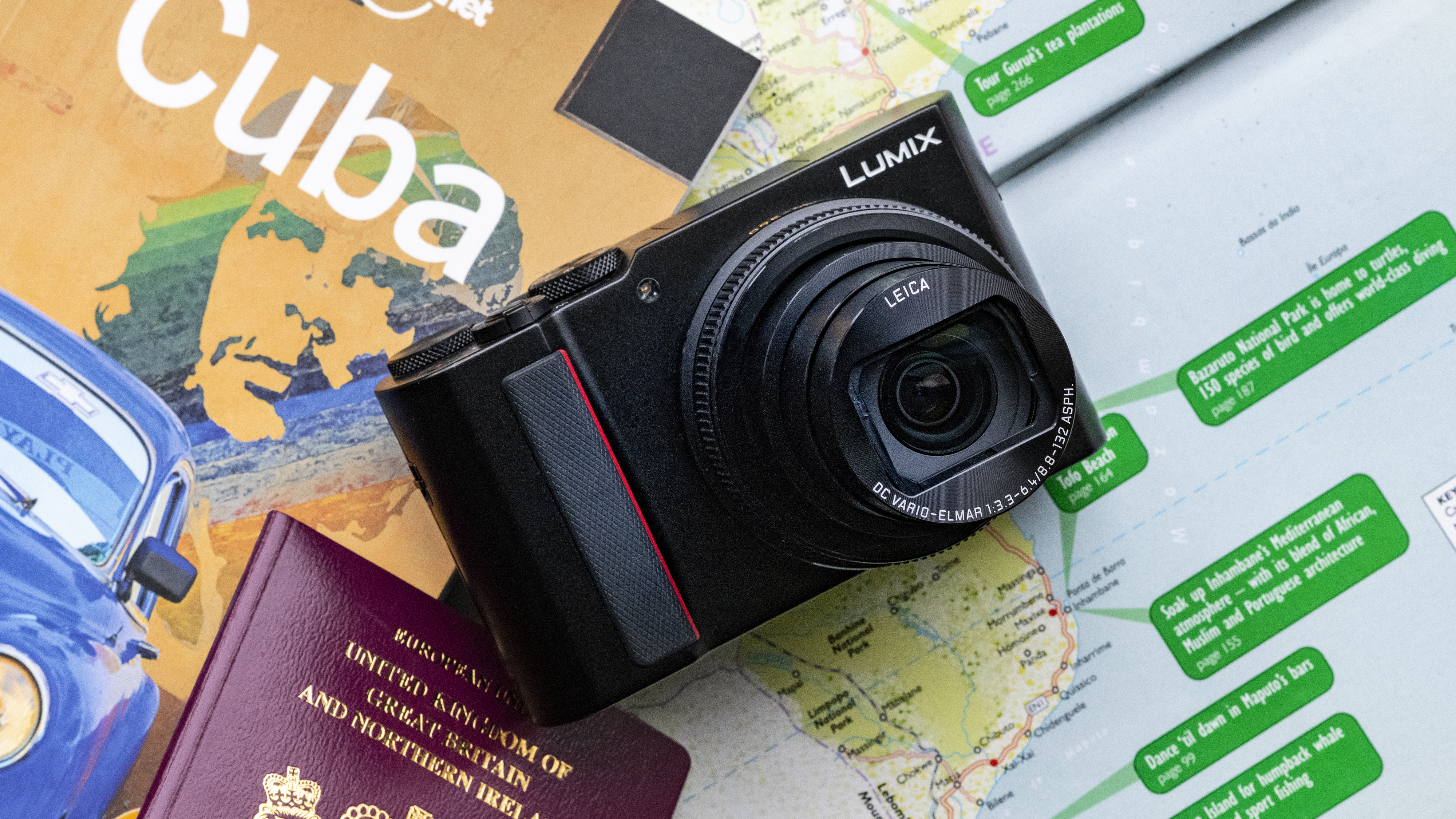
With the rise of high-end compacts like the excellent Sony Cyber-shot RX100 V stealing the thunder from compact travel zooms, Panasonic's response has been to keep the camera body about the same size as its earlier ZS/TZ-series cameras but to squeeze in a much larger sensor. We saw this with the Lumix ZS100 (known as the Lumix TZ100 outside the US), and Panasonic has continued this with the newer Lumix ZS200 / TZ200.
This physically larger 1in sensor enables much better image quality than would otherwise be the case, but the slight downside is that the zoom range from the lens isn't quite as extensive as some others with smaller sensors. That said, The ZS200 / TZ200 still sports a very versatile 15x zoom, while there's also a handy built-in electronic viewfinder, which makes it easier to compose images in bright light. It's a bit pricey, but this is still the best travel zoom compact camera available right now.
- Read our in-depth Panasonic Lumix ZS200 / TZ200 review

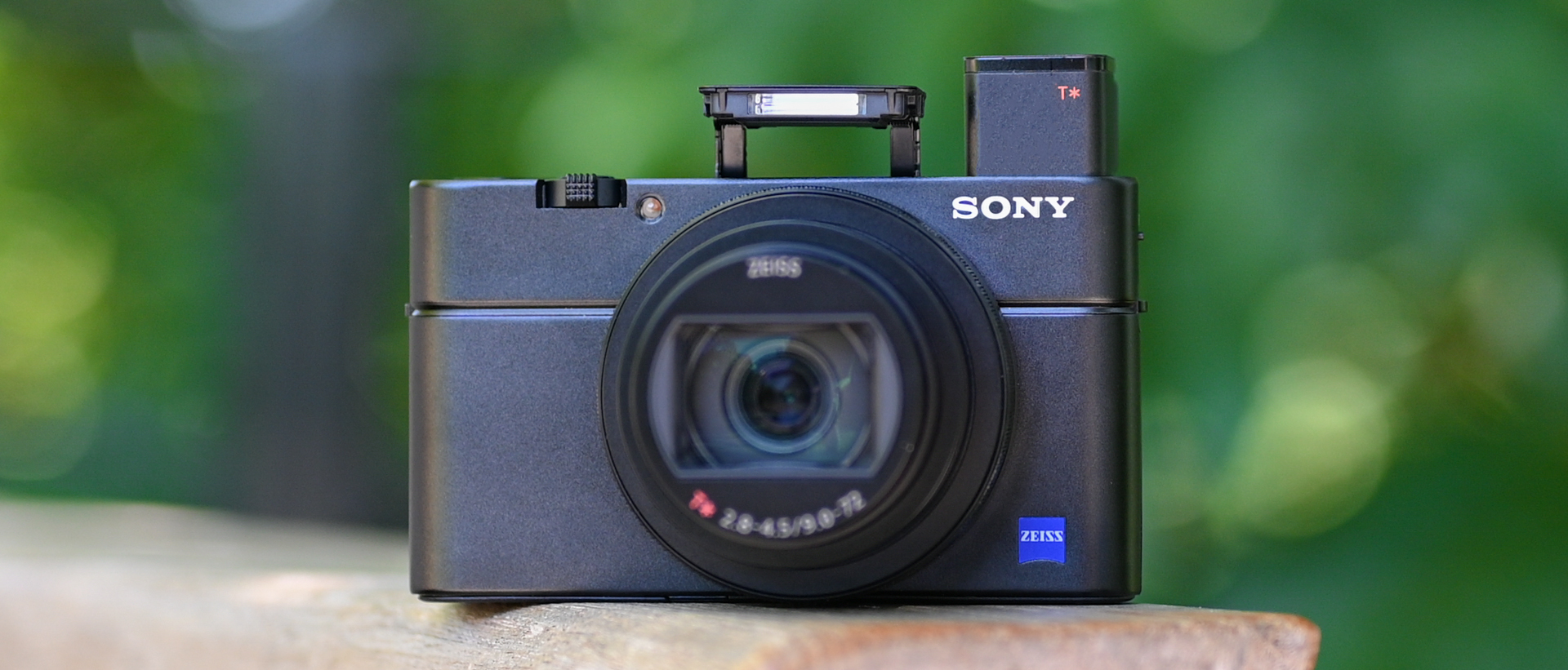
Sony revolutionized premium compact cameras with the original RX100 as it was the first pocket-sized camera to feature a large 1.0-inch sensor. They were always great for travel, but thanks to a relatively limited zoom lens, were perhaps sometimes overlooked in favour of other models. Things changed when we got to the RX100 VI, which paired a much longer lens than ever before - and now we've seen some refinement of the model for the latest, the RX100 VII.
The sacrifice for making the lens longer is losing the super wide aperture of previous generations, but if you're mainly going to be shooting in sunny climes, it may not be such a big deal. There's also a heck of a lot of power under the hood of the RX100 VII. It houses features that you might not ever use, such as a ridiculous 90fps burst mode, as well as those that are more commonplace, such as 4K video. The big downside of this model is its super-high asking price, but if you want the best of the best for your travels - it could just be the one for you. If your budget doesn't quite stretch to the asking price of the RX100 VII, take a look at older models throughout the range for better prices.
- Read our in-depth Sony Cyber-shot RX100 VII review


Sometimes a mirrorless camera really hits the sweet spot of size, price and features for most people – and that's the case with the Fujifilm X-S10. It's not an entry-level camera or as small as a premium compact, but you get an awful lot for your money. And if you combine the X-S10 right lenses, it's an excellent, versatile travel for most types of trip.
While the X-S10 doesn't official have weather-proofing, its magnesium alloy build quality is excellent and will certainly handle life in a backpack. Thanks to its large grip, the handling is also excellent, whether you're carrying it around one-handed or attaching a longer zoom lens.
Most importantly, the X-S10's APS-C sensor produces the best image quality available in this size of camera – and it's great for 4K video too. The autofocus is edged out by Sony's Real-time tracking AF, but remains very solid in most situations. And the secret weapon is the in-body image stabilization (IBIS), which is a real bonus for handheld shooting – particularly when you pair it with a small, unstabilized prime lens. The Nikon Z50 might be a little hardier, but overall the X-S10 is the mirrorless camera we'd like to have in our travel bags.
- Read our in-depth Fujifilm X-S10 review

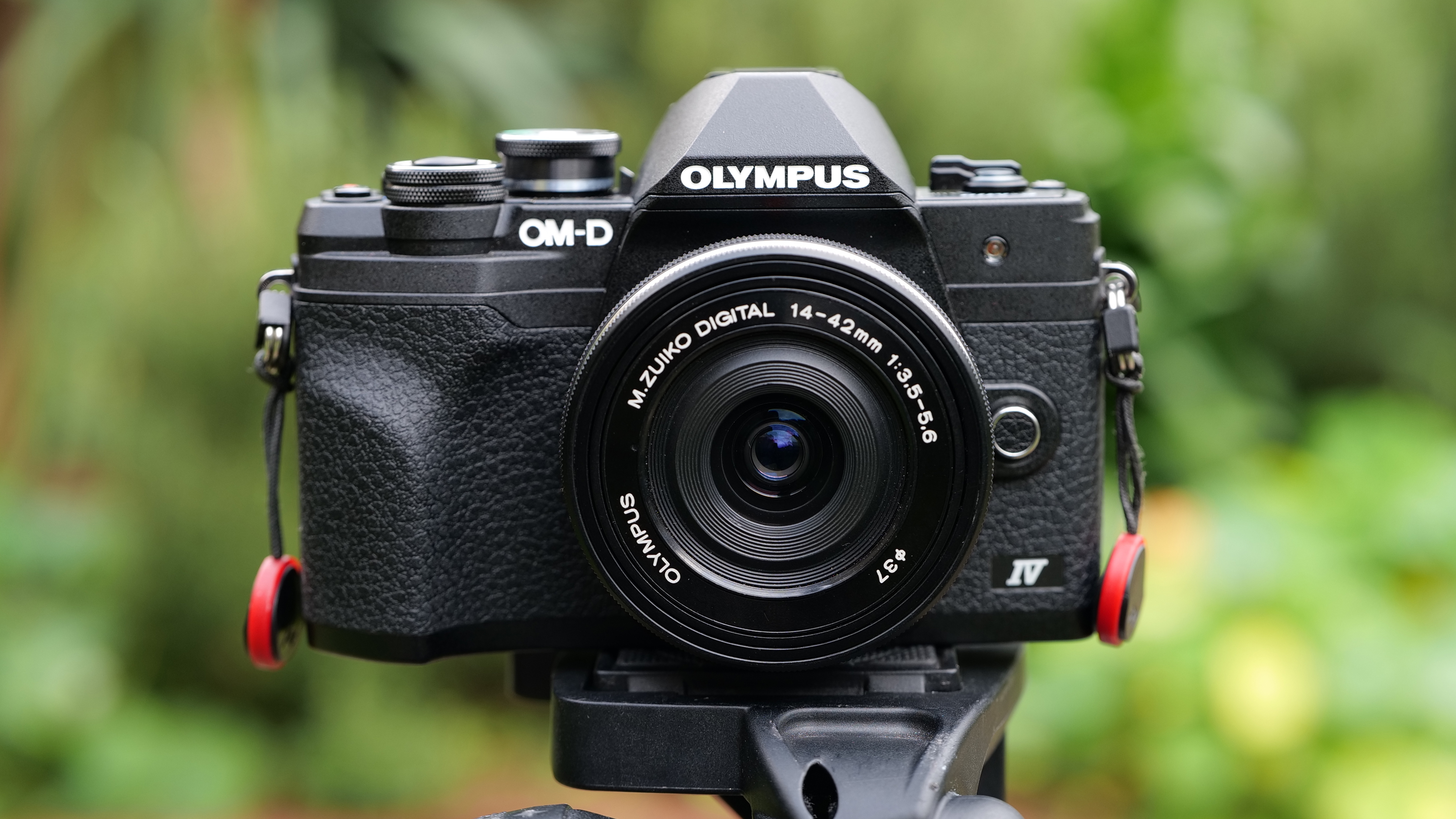
With its small, compact and light body, the OM-D E-M10 Mark IV is a fantastic option for both travellers and those new to photography. As it’s in its fourth iteration, the E-M10 has been carefully refined over the years, making it one of the best options around for travel and everyday photography.
The E-M10 Mark IV’s power is in its simplicity, which also means that you need to compromise on some advanced specs – such as 4K/60p and microphone/headphone inputs, which are lacking here. If you’re somebody who's mainly concerned with stills shooting, though, you’ll get a bargain by not paying for something you don’t need.
As well as offering a small body size, the Micro Four Thirds lenses that are compatible with the E-M10 Mark IV are also handily neat and compact, so you can grab a few different optics for your travels and not take up too much room in your luggage.
Other useful specifications include the tilting 3.0-inch touchscreen, in-body image stabilization for keeping your shots steady, and a handy 2.36m-dot OLED viewfinder.
- Read our in-depth Olympus OM-D E-M10 Mark IV review


On paper, the Canon EOS M50 Mark II is a feature-packed APS-C camera with plenty to offer for traveling content creators. Its 24.1MP sensor is capable of producing great stills, with good dynamic range, decent noise control and a 10fps burst speed. The odd reality is that the original M50 also offered these things: what’s new with the Mark II is not hardware, but software. That means it still suffers from the same heavy 1.5x crop on 4K video and ships with a slower phase-detect autofocus system.
But there are also advantages. It gains eye-detect autofocus for both stills and video, as well as the option to shoot vertical videos – ideal for would-be influencers. Added to that are a video-recording button available on the touchscreen, a movie self-timer and the option for YouTubers to wirelessly live stream – provided they have more than 1,000 subscribers. So it’s far from a total overhaul and existing M50 owners should stick with what they’ve got. But for new users, the M50 Mark II is a versatile entry-level option for capturing travel stills and video.
- Read our in-depth Canon EOS M50 Mark II review

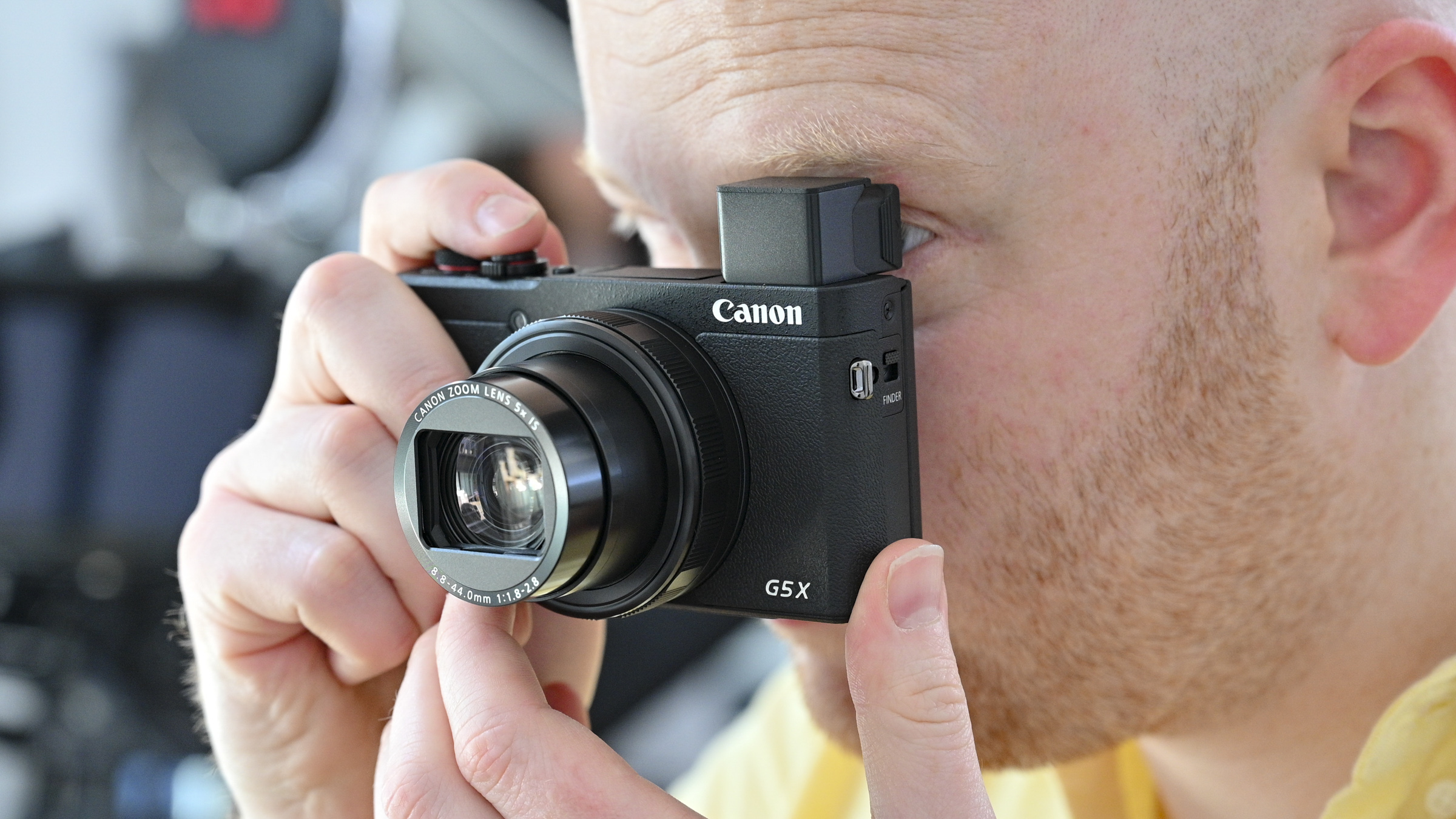
What the G5X Mark II loses in zoom, it makes up for in other areas. With a wide maximum aperture throughout the focal length, this is a camera which is well-suited to a wide range of lighting conditions. Besides which, having up to 120mm (in 35mm terms) available is still pretty flexible. Elsewhere, there's a high-performing 1-inch sensor, great 4K videos and a pop-up electronic viewfinder which pairs well with the tilting LCD screen. There are undoubtedly more advanced cameras on the market, but not many combine a good range of features like this in one competitively-priced package.
- Read our in-depth Canon Powershot G5 X Mark II


Compact, versatile, capable – pick any two and you’ve got a good travel camera. The Olympus OM-D E-M5 Mark III is all three, and then some. Its weatherproof polycarbonate shell is small and light, yet handles wonderfully. It offers on-the-go photographers a raft of modes and features that guarantee great holiday snaps. And the combination of a powerful image processor, on-chip phase detection autofocus and some of the best image stabilization skills around make it an incredibly capable piece of kit to shoot with as you move. Yes, its outright image quality can’t match larger formats in trickier conditions – low-light, for example – but you’ll struggle to find a travel camera that can tick so many other boxes. Add 4K video into the mix for those roaming vlogs and you’ve got a mirrorless camera that deserves a spot in your carry-on.
- Read our in-depth Olympus OM-D E-M5 Mark III review

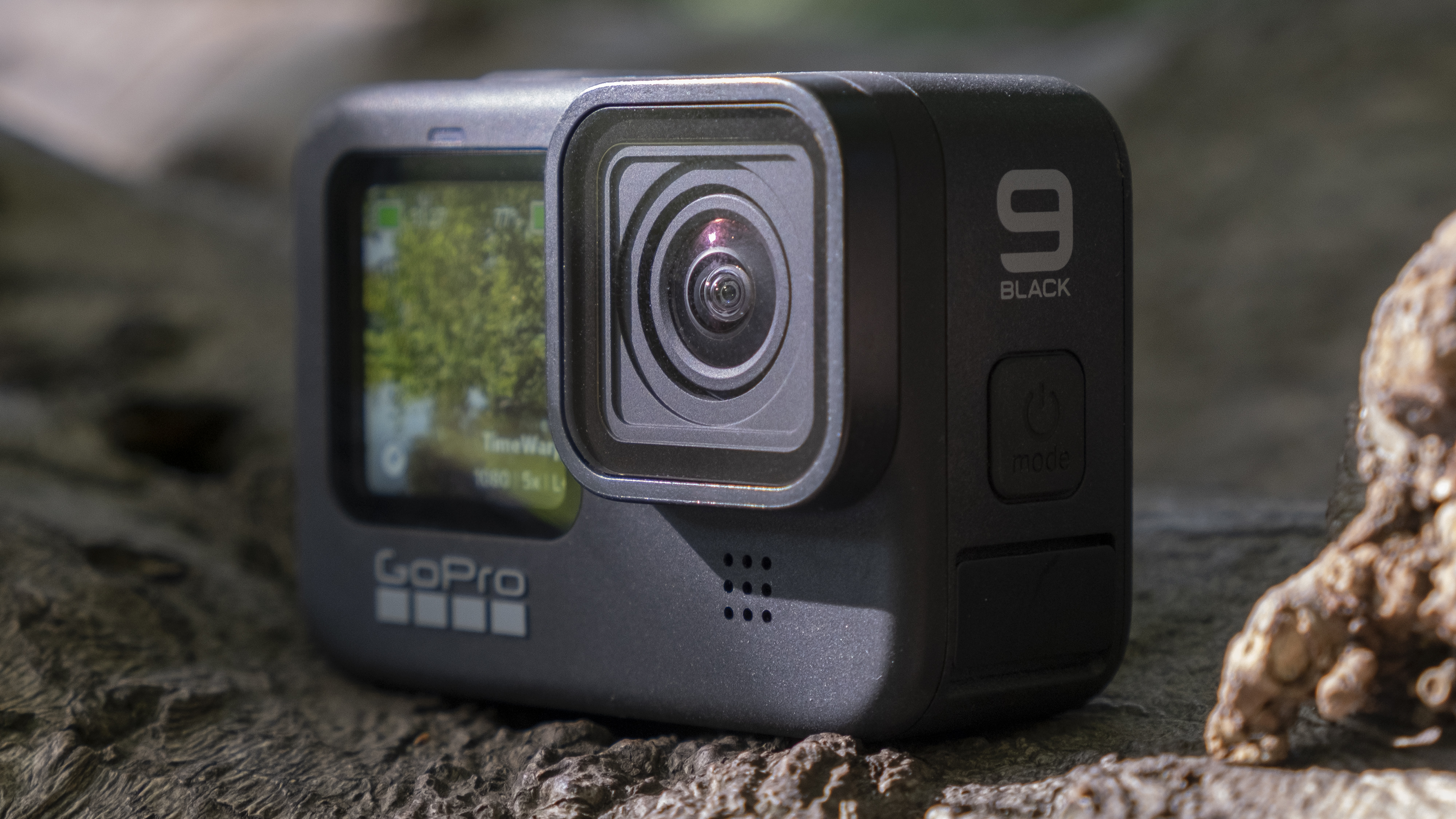
If you need a tiny, pocketable video camera that can handle pretty much anything your trip throws at it, then an action cam should be top of your list. And the most powerful, versatile one right now is the GoPro Hero 9 Black.
This model is the only GoPro that has a built-in color display on its front, which is very handy for framing your travel highlights. Compared to the more affordable Hero 8 Black (which is also worth considering), it also brings a larger battery and some nifty new software tricks.
These include HindSight, which captures the action 15-30 seconds before you hit the shutter, along with HyperSmooth 3.0 stabilization, for smoothing out the most juddery of mountain bike footage. The 5K video mode captures more detail than any other GoPro too, while the Linear shooting mode helps correct the wide-angle distortion to make footage look like it's been shot with a more traditional camera.
Overall, the Hero 9 Black's sensor is smaller than those found in premium compacts and mirrorless cameras, while its focus is more on video than stills. But if you mainly want to shoot video, its considerable benefits are the compact size, 10m-waterproofing and compatibility with a range of mounts that help you get shots that are simply impossible on other travel cameras.
- Read our in-depth GoPro Hero 9 Black review


A premium compact camera with a design inspired by 1950s analogue cameras and a fixed 23mm f/2 lens? Sounds like the very definition of niche. And yet, far from an anachronism, Fujifilm’s X100V is one of the best travel cameras you can buy.
For a start, it takes the small form factor that made the X100F before it so convenient to carry and adds a supremely useful tilting touchscreen. The advantages are gesture support and easier shooting at tight angles.
Inside, a new 26.1MP sensor and X-Processor 4 translate into improved autofocus, image quality and high ISO performance, building on what was already a fantastic shooting experience with the fixed aperture lens. Add in the option to shoot 4K/30p footage on the fly, as well as a higher resolution hybrid EVF, and you’ve got a properly capable pocket performer – provided you’re happy to pay a premium.
- Read our in-depth Fujifilm X100V review

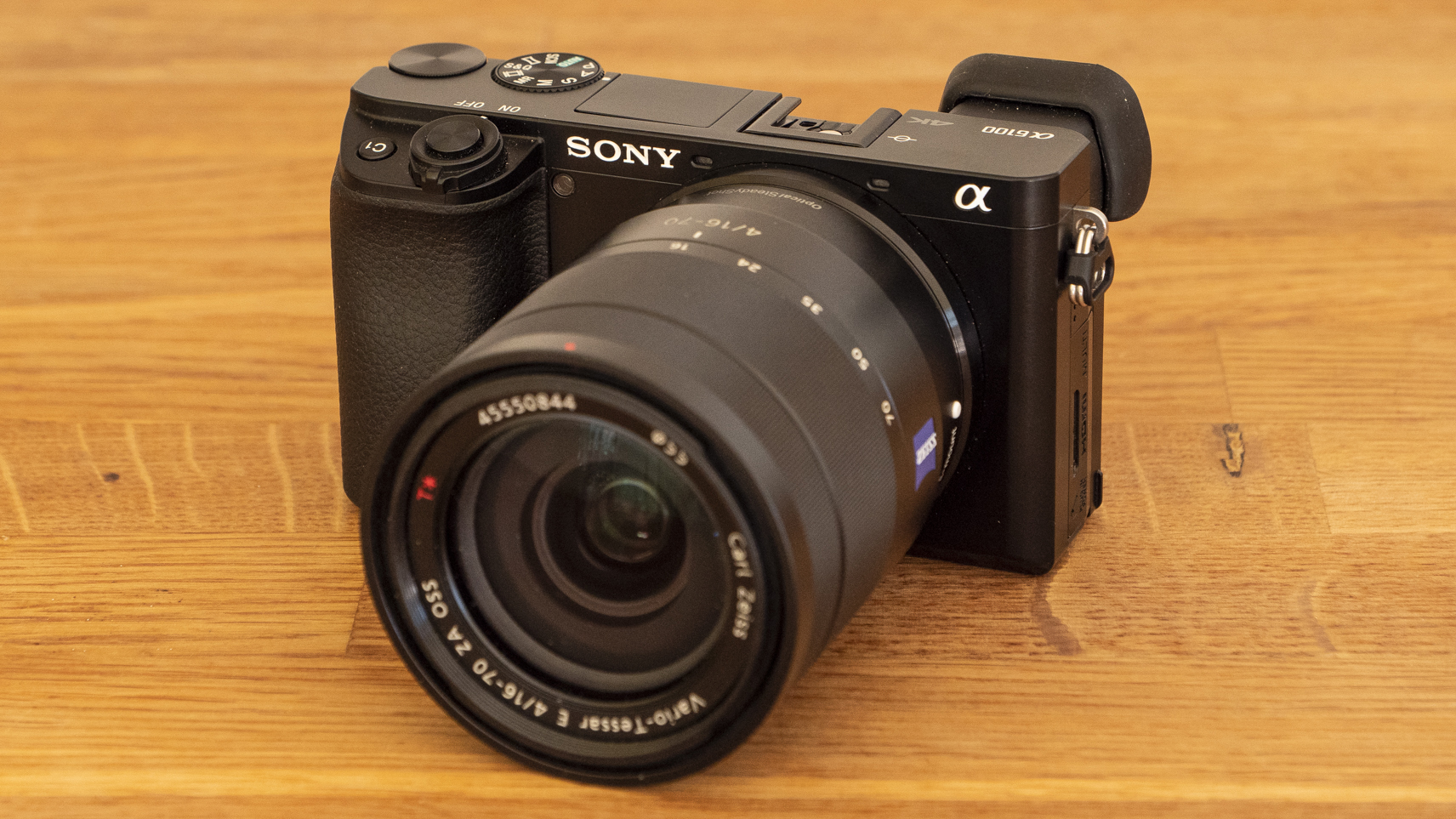
If you don't mind carrying something slightly larger than a pocket camera on your travels, the Sony A6100 arguably offers the best balance of size, shooting power and value right now. It isn't without its flaws, but it does tick most boxes for globetrotting photographers. Despite its compact size, this entry-level mirrorless camera offers a fleet of useful features – from customizable buttons and a microphone input to the flip-up touchscreen that, though limited in functionality, is ideal for framing far-flung selfies. Paired with a good lens, the 24.2MP sensor serves up decent images with plenty of detail, while the AF system – shared with the flagship A6600 – ensures reliably sharp focus and excellent continuous tracking, even on the move. The A6100 can capture 4K footage at 30fps, too, though there’s no IBIS when shooting travel vlogs. Battery life is also pretty solid, as is the Wi-Fi, which works well with the partner app for rapid sharing of holiday snaps. Less impressive are the relatively low-res EVF & LCD and the Auto ISO, which can struggle with quick-moving subjects – so it’s best to go full manual for street action shots. It’s not perfect, then, but the A6100 comes close to travel perfection, offering good value, strong specs and a satchel-friendly form.
- Read our in-depth Sony A6100 review

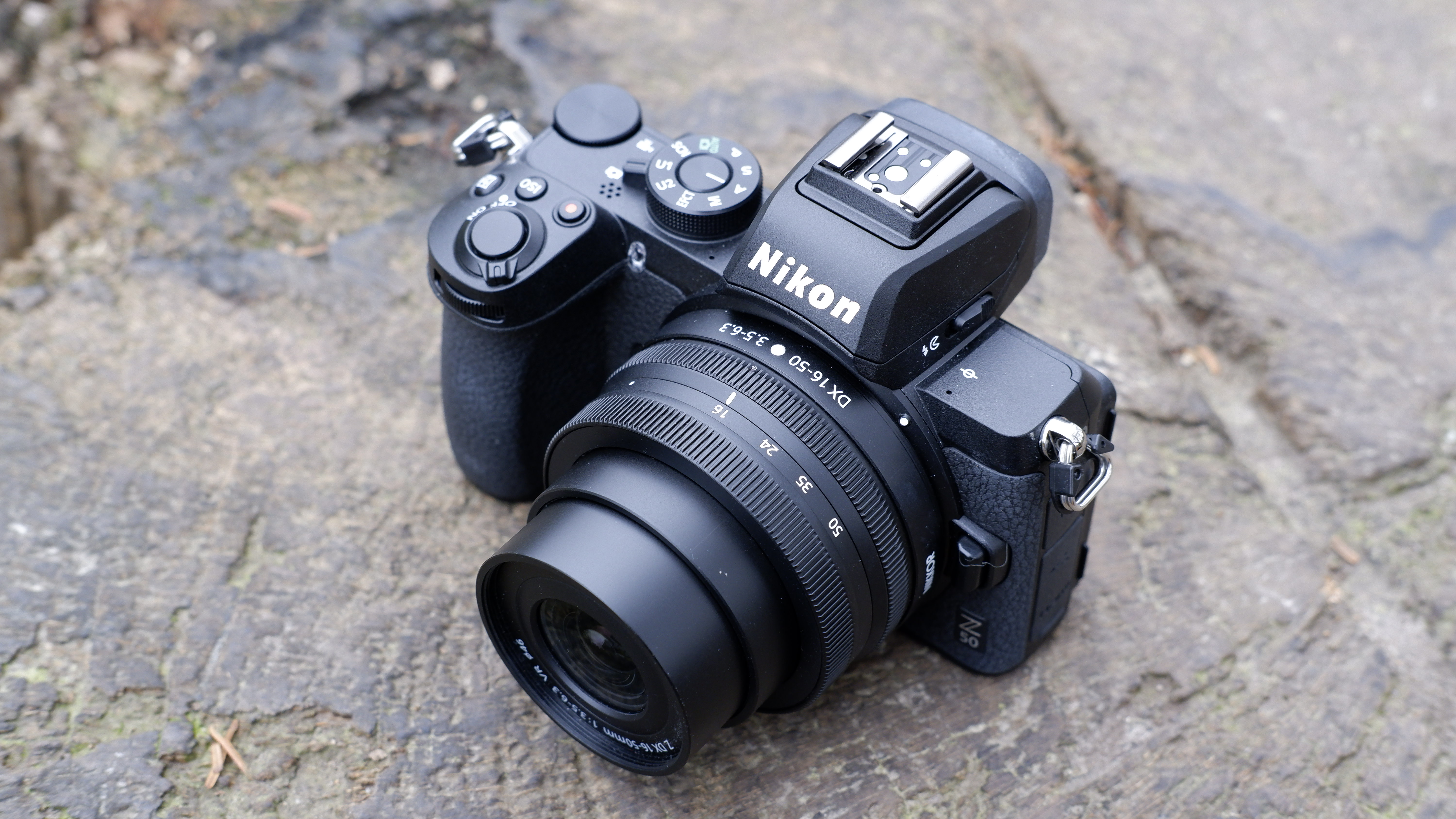
The Nikon Z50 is a great option if you like Nikon and are after your first 'proper' camera. It works well as a travel camera and has a very comfortable button layout. The 3.2-inch screen can also flip underneath the body to compose selfies of an altogether higher class, although it and the tripod mount compete for space. At this point, not many lenses have been made specifically for the Z50’s DX format, but the range will naturally grow larger over time, and you can use those made for the full-frame Nikons too. We prefer the Sony A6500 for high-speed action shooting, but this is a good-value camera and generally a joy to use.
- Read our in-depth Nikon Z50 review


The Panasonic GX9 is an older model now, but that means that it’s currently available at a cracking price. It uses the Micro Four Thirds mount to give you access to a huge range of lenses – ideal for traveling with lots of different options.
Using a flat, rangefinder-style design, it’s ideally suited to travel and street photography, being both compact and stylish – a great addition to your carry-on luggage. It uses a 20.3MP sensor which performs well, particularly in good light, and boasts other useful features such as 4K video, a 3-inch tilting screen and a very usable viewfinder.
Battery life is a little on the limited side, so you might want to pack a spare if you’re traveling extensively, but otherwise, this is a great little all-rounder for those who want something light and powerful.
- Read our in-depth Panasonic GX9 review


Olympus arguably started the hardcore camera trend with its Tough series, and the TG-6 doesn’t break the mould. Innovation might have slowed, but the Tough TG-6 is still one of the best rugged travel cameras you can buy – and there’s no questioning its freeze-proof, shockproof and waterproof credentials. Its industrial design is reassuringly rugged, with fiddly catch mechanisms that protect the ports. Large buttons make it convenient to operate beneath the waves, while the improved 3-inch LCD display also offers decent visibility in most conditions.
Image quality is reasonable for a camera with a 1/2.3-inch sensor, with nice, rich colors – although there is a tendency to overexpose and blow out highlights. An equivalent zoom range of 25-100mm is fair, plus the inclusion of 4K video and raw shooting enhance flexibility. It’s not a major upgrade from the TG-5, but the Olympus TG-6 is nevertheless a stellar option for all-action travelers.
- Read our in-depth Olympus TG-6 review


In terms of offering something for everybody, the RX10 IV ticks a lot of boxes. It's like having a bag full of lenses, but with the benefit of never having to change them. There's a very long zoom, while the maximum aperture is pretty wide throughout the lens. The sensor might not be as a large as the ones you'll find on a DSLR/CSC, but Sony's 20.1MP one-inch device has proven itself to be very capable regardless. You also get 24fps shooting, cracking 4K video quality and handling to rival a DSLR. The major downside? The high price – if your budget is tighter, don't forget about this camera's predecessor, the RX10 III.
- Read our in-depth Sony Cyber-shot RX10 IV review

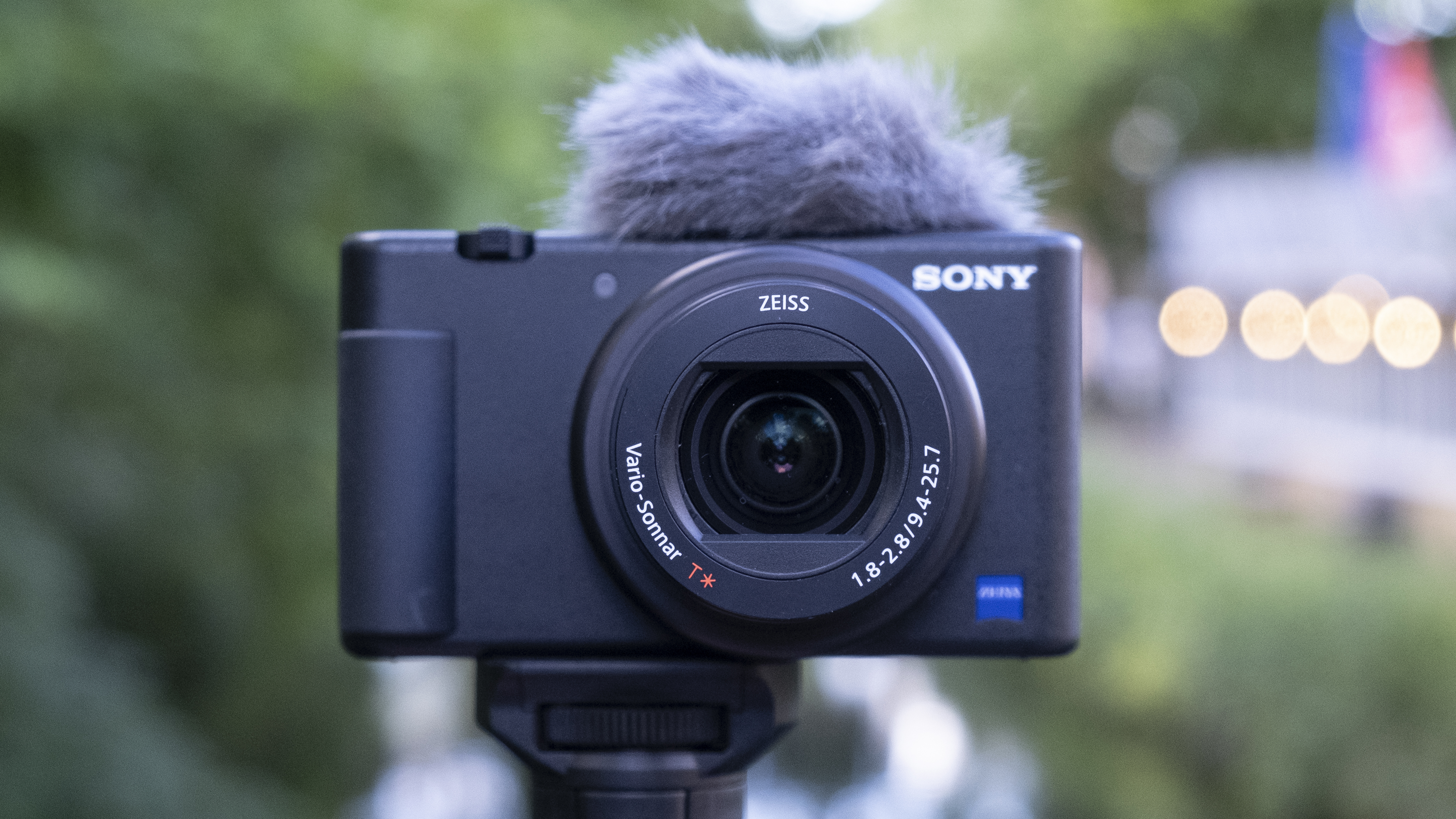
If you're looking to mainly shoot travel video rather than stills, then the Sony ZV-1 is the best pocketable option around. It combines the best video-focused features of Sony's RX100 series and adds its latest autofocus system, which is comfortably the best you can find in a compact camera. The lack of an electronic viewfinder means the ZV-1 is less convenient for stills shooters than the RX100 VII (see no.4), but it's still a capable smartphone backup thanks to its 20.1MP 1-inch sensor. It's video where the ZV-1 really shines, though, with its bright 24-70mm f/1.8-2.8 lens and Real-time Eye AF perfect for shooting professional, smartphone-beating vlogs. A 3.5mm microphone jack also means you can get audio quality to match the video too, while a built-in hotshoe is on hand to help you mount accessories.
- Read our in-depth Sony ZV-1 review


Fujifilm’s second entry-level X series model is a major improvement to its predecessor. While it might not quite rival the pricier X-T30 (see above), the pared-back X-T200 is a versatile and accessible option for jet-setters. Both the APS-C CMOS sensor and processor have been upgraded, unlocking 8fps continuous shooting and the option to capture 4K footage at 30fps. There’s also a new ‘digital gimbal’ which deftly stabilizes video, but only up to 1080p. Physically, the X-T200 retains the retro style of the X-T100, while offering a beefier, more comfortable grip. The touchscreen has grown to a generous 3.5 inches, too, though at the expense of convenient joystick placement. Viewfinder fans will welcome the sharp OLED EVF, even if an unreliable eye sensor often makes the screen a more appealing option for framing. As for image results, dynamic range is good and color reproduction excellent, aided by a 256-zone metering system, with plenty of detail and decent noise handling. Subject tracking isn’t available for video, but the hybrid AF system performs well when shooting stills, with spot-on face detection. Easy to use yet capable of delivering marvelous results, the X-T200 ticks a lot of boxes for travelers.
- Read our in-depth Fujifilm X-T200 review


If none of the cameras in our best travel camera list above quite fit the bill, there is an alternative that is a few generations old but still packs a punch. The RX100 III from Sony is a couple of years old now and was originally selling for near $1,000/£1,000, but with the arrival of newer models (including the RX100 VII), it's dropped massively in price. Downsides? Well, the zoom is pretty short compared to other rivals here, but otherwise there's a lot to like. There's a decent 20.1MP 1-inch sensor, a pop-up electronic viewfinder and 4K video recording, while it's packaged in a premium, metal body. Definitely worth a look if the zoom range isn't your main concern.
- Read our in-depth Sony Cyber-shot RX100 III review

How to choose the best travel camera for you
Need a bit more guidance on how to decide the right type of travel camera? Have a think about the following options:
Travel Zoom Compact
These small pocket-friendly cameras give you great scope for shooting lots of different kinds of subject, with a zoom lens that gets you close to the action, as well as giving you the opportunity to shoot nice and wide. The trade off for having all of this in a neat compact size is generally a smaller sensor which is less useful for shooting in low light.
Premium Compact
If you want to stay pocket friendly, but you’re happy to lose the ultra long zoom, think about a premium compact. These generally pack a one-inch sensor for better image quality, but will normally have a shorter zoom. Some may give you both - but you’ll pay a very high price for it.
Bridge Camera
A bulkier option than a standard compact camera, but with better scope for zooming, a bridge camera is also ideal for those who like more intuitive and comfortable handling. They’ll usually have a solid grip, decent electronic viewfinder and a flexible screen. You get many of the benefits of having a bag full of lenses, but without the extra luggage.
Mirrorless / Compact System Camera
This is the option if you want the best possible image quality and you’re prepared for a little bit of hassle. With lots of different lenses to choose from, you can pack different optics depending on the type of trip you’re on, or pack a good all-round lens and not worry too much about swapping optics. You’ll have the best possible handling, too as well as plenty of advanced options.
Many of the current compact system cameras on the market have been specifically designed with travel in mind - and are as small as possible. We’ve included some of the best options here.
If you’re still unsure about which kind of camera you need, check our step-by-step guide: What camera should I buy? Alternatively, if you’re going to be by the pool or on the beach, you might want something a bit more rugged – in which case, take a look at our best waterproof camera and best action camera guides.
from TechRadar: Photography & video capture news https://ift.tt/2V5BzUR
via IFTTT






0 kommenttia:
Lähetä kommentti